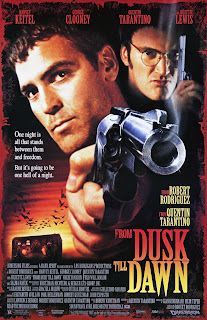365 Films
Entry #90
Winter
Solstice (2005)
Directed by
Josh Sternfeld
Less you think that these entries are
randomly assembled and hopelessly scrambled together in a vain attempt to
produce some sort of coherent narrative, I’ll have you know that both Winter Solstice and yesterday’s entry
Brief Encounter feature scenes of characters having pieces of grit removed from
their eye-balls. I totally and
completely meant to do that. I
feel like there is also a scene in Pitch Black where somebody injects something
into their eyeball, I guess I should do that next (I’m just kidding, Pitch
Black isn’t a real movie, don’t be absurd). Winter Solstice concerns a family’s attempt to move on from
a horrific tragedy that has them seemingly stuck in place and time. The father, a landscape gardener named
Jim Winters has to contend with his two grown sons, one of whom is about to
flunk out of high school and the other has been recently hit by a serious case
of wanderlust and is itching to leave the nest. The aforementioned tragedy was the loss of Jim’s wife and
the boys’ mother in a fatal car accident.
So far it sounds like a fairly traditional low-key indie narrative and
it most certainly is that but where Winter Solstice really shines is its
attention to detail. The setting
is an anonymous Jersey suburb yet through the naturalistic sound design and
idle pacing, writer-director Josh Sternfeld conveys everything you need to know
about these people and their lives.
I don’t thing I’ve ever seen another movie where more characters ask
each other “what are you up to?” than this one. I don’t mean that flippantly by the way, it’s eerily emblematic
of what it’s like to grow up in one of these types of areas. That’s what always sticks the sharpest
to me about Winter Solstice, the feeling that I know these neighborhoods, I
know these fluorescent tinted hang outs, and most of all I know these
people. I suppose it also helps
that I saw this during a time in my life when I never really experienced where
I grew up represented on screen. Winter
Solstice is also indicative of another unique type of movie-going
experience. I remember when my
brother and I checked this out at the Angelika way back in the spring of 2005,
we knew very little to nothing about it going into the theater. I believe it got a handful of decent
reviews but nothing attention grabbing.
I think the primary motivating force for the both of us was the trailer’s
use of the Iron and Wine song, Sunset Soon Forgotten (see below) and we figured
anybody who’s down with the Beam can’t be too egregious a waste of time. It’s a tricky thing to do in cinema,
especially since we are so inundated with every single aspect of film
production through blogs and other entertainment news aggregate sites (I know I’ve
harped on this before so I’ll try not to again) but it’s a particularly unique
sensation when something just completely surprises you out of the blue. I went into this movie literally
expecting nothing and I was hit with an evocation of a period in my life that I
hadn’t figured out how to examine yet.
I’m not saying the film navigated me through my own memories but it
certainly helped push the boat out to sea (if you’ll forgive my tortured metaphor,
if that even is a metaphor). That’s
just one of the many reasons why cinema is such an invaluable art form. One more personal rant, if you’ll
indulge me for a few more sentences.
Winter Solstice was released a little less than a year after Garden
State and drew about an infinitesimal percentage of its publicity and box
office. Examining the two films
now, they both share thematic similarities concerning how families deal with
collective grief in small Jersey neighborhoods. The only difference is Garden State literally makes me
squirm whenever I am unlucky enough to share its sphere of existence while
Winter Solstice is like meeting up with an old friend. I guess that whole hype thing can swing
both ways sometimes.










